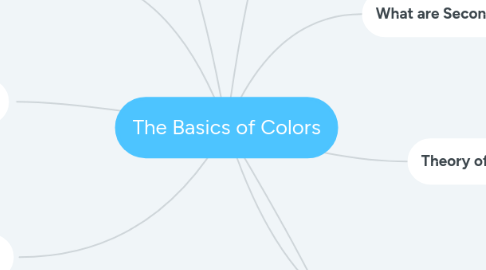The Basics of Colors
by Emily Venezio


1. Primary Colors
1.1. Red, blue, and yellow
2. What Primary Colors?
2.1. Primary colors cannot be mixed from other colors. They are the source of all other colors.
2.1.1. Red, blue, and yellow are all colors at the top of the wavelength scale. ROYGBYV
3. Theory of Primary Colors
3.1. The primary colors are at the top of any color structure. Primary colors are the root of every other color.
3.1.1. Definition of pigment: A pigment is a material that changes the color of reflected or transmitted light as a result of wavelength-selective absorption.
4. What happens when?
4.1. Red+blue=PURPLE
4.1.1. Yellow+Red=ORANGE
4.1.1.1. Yellow+blue=GREEN
5. Color Mixing for Children,Primary Colors for Kids,Mixing Watercolor for Babies
6. Secondary Colors
6.1. Orange, green, and violet
7. What are Secondary Colors?
7.1. Secondary colors are mixed from two primary colors adjacent to each other on the color wheel.
7.1.1. Also known as complementary colors. These colors are made by mixing two primary colors in a given color space.
7.1.1.1. Additive secondaries: LIGHT (RGB)
7.1.1.2. Subtractive secondaries: PIGMENTS (CMYK)
8. Theory of Secondary Colors
8.1. The RGB secondary colors produced by the addition of light turn out to be the best primary colors of pigments, the mixing of which subtracts light.
8.1.1. ROYGBYV: Wavelength scale
9. How do you get Secondary Colors?
9.1. Mixing pigments
9.1.1. Mixing paints
9.1.1.1. Mixing substances
